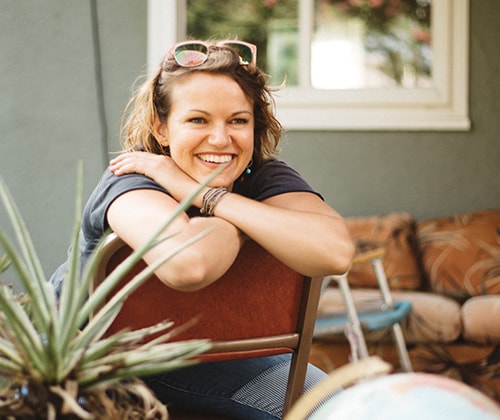Cancer Care Proced > Natural Breast Reconstruction
Natural Breast Reconstruction

Modern advances in medicine have made it possible to achieve attractive breast reconstructions after cancer surgery without the use of silicone devices. These techniques are referred to as “natural” breast reconstruction as tissues from your own body are used to restore the appearance of the breast after cancer care while creating an aesthetic improvement to the fat donor site.
For small defects after lumpectomy, fat can be harvested using liposuction and transferred to the preserved breast to correct deformities that may be present immediately after surgery or even years later. This type of reconstruction is known as “fat grafting” and can be completed in roughly 1-hour in the operating room. Recovery time is brief. Patients undergoing fat grafting on a Friday afternoon are often ready to return to work on the following Monday although they may briefly wear a liposuction compression garment to facilitate the long-term aesthetic appearance of the donor site. Patients do not require surgical drains and are discharged to home on the day of surgery. Imagine exchanging unwanted fat from your “love handles”, or any other body area of your choice, to correct an acquired breast deformity after lumpectomy surgery.
Other “natural” options are available to patients that require mastectomy. Fat and overlying skin with its own blood supply can be transplanted to the chest wall in the form of a “flap” to recreate an entire breast. Historically, surgeons would sacrifice important muscles along with the natural fat flap transfer. These older operations as the Latissimus Dorsi flap from the back or the TRAM flap from the lower abdomen have been abandoned due to high rates of patient dissatisfaction. Patients commonly suffered from the loss of muscle strength, chronic pain and donor site hernias.
Modern muscle and nerve sparing microsurgical techniques define the highest and most sophisticated standard of care for breast reconstruction currently in the United States. Essential blood vessels are harvested along with the “fat flap” while leaving the muscles and motor nerves of the donor site unharmed. These blood vessels are then attached to blood vessels in the chest wall using an intra-operative microscope therefore re-establishing the needed blood flow to keep the larger fat flap transfer healthy.

The most common natural microsurgical breast reconstruction technique utilizes fat from the lower abdomen. Aesthetically designed just as one would for an abdominoplasty or “tummy tuck”, the DIEP (Deep Inferior Epigastric Perforator Flap) or SIEA (Superficial Inferior Epigastric Artery Flap) can be used to reconstruct one or two breasts after mastectomy. For profoundly thin patients, both sides of the abdomen can be combined in order to achieve enough volume – this is known as “stacking” flaps. Other “natural” donor site areas include the upper hips (SGAP flap), lower buttocks (IGAP flap), lateral thigh (ALT flap), posterior thigh (PAP flap), inner thigh (TUG flap), back (TDAP flap) or anteriorly adjacent to the pelvic bones (DCIP flap). These too can be stacked to optimize the size of the final reconstruction.
Microsurgical breast flaps are named based on the blood vessels that supply the overlying transferred fat and skin. Imagine helping your surgeon design your unique reconstructive plan. Your assignment is to define the best donor site area for you – Where would you like to have a cosmetic improvement? Where would you like to have fat removed and transferred to recreate a breast after mastectomy?
Interestingly, microsurgical breast reconstructions are not particularly painful operations. Microsurgical procedures do require more time in the operating room and a longer hospitalization in the range of 3 days, but given the muscle preservation, many patients require minimal pain medications after surgery. Drains are placed at the time of natural flap surgery and are removed in approximately 2 weeks.
Not all patients have enough fat to recreate a breast size they desire. No worries, supplemental fat grafting and/or breast implants can be used in the setting of microsurgical flap reconstructions to provide additional breast projection and volume. The combination of a silicone breast implant beneath a flap is known as a “composite” reconstruction. Implants can be placed at the time of the original flap surgery or as a part of second stage procedures addressing nipple/areolar reconstructions and potential donor site revisions. Supplemental fat grafting can be completed during any or all second stage procedures to optimize the final breast volume and to enhance the aesthetics of the fat donor site.
We provide care for patients whom travel to Charleston from all regions of the United States and abroad as not all Plastic Surgeons are trained to preform these more sophisticated forms of natural breast reconstruction. Patients commonly remain in Charleston for 7-10 days depending on the complexity of the surgery performed.
Dr. Marga is a board-certified Plastic Surgeon with a focus on all forms of breast surgery – lumpectomy, mastectomy, breast reduction, breast lift, breast implants, fat grafting and microsurgical “natural” flap transfers. She is the most experienced female breast reconstructive microsurgeon in the Southeast having been in practice for nearly two decades with an exclusive focus on surgical procedures of the breast. She would be pleased to address all of your personal aesthetic and reconstructive concerns in the setting of a phone or in-person consultation.
Natural breast reconstructive surgery is covered by all forms of US health insurance as is defined by the Women’s Health and Cancer Rights Act (WHCRA) of 1998 (www.cms.gov/CCIIO/Programs-and-Initiatives/Other-Insurance-Protections/whcra_factsheet.html). Further, surgery on the contra-lateral breast for symmetry and for the treatment of complications of breast cancer care are also federally mandated surgical services available to women recovering from breast cancer treatment.

Dr. Marga is pleased to evaluate your unique breast concerns to include your radiographic evaluations and physical examination to define the most appropriate onco-plastic surgical outcome with a focus on oncologic safety and superior cosmesis after cancer care.
